0808 238 7542(free from UK) 0034 635 377 557 (mobile)
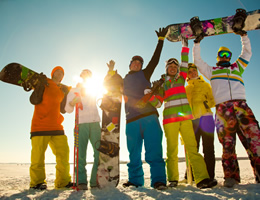
When planning your first ski trip there are many questions that go through your mind about what you will need to buy in advance as well as what you can get once in resort. You are very excited about getting to the slopes but also a bit nervous and unsure of exactly what to expect. It is best to plan in advance and try not to leave everything until a few days before you depart.
Anything you forget to buy in advance, don't worry as you can also buy these once in resort. Here is our "what to wear on the slopes" guide.
Most people, even those who have been skiing many times before don't own their own skis so as it's your first time don't buy any skis. You can rent these in one of the ski rental shops in Arinsal/Pal or Grandvalira once you arrive in resort which you can book through us. The staff in all the rental shops are knowledgeable and will guide you through your experience making sure your skis, boots and poles are suitable. They will also set up the ski bindings to the correct setting based upon your size and ability.
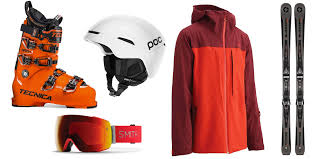
A lot of people who have been skiing before decide to buy their own ski boots. Most people, however, especially beginners, will rent from the ski rental shop in resort. The staff will make sure you have a pair that fit and are comfortable. Once your first ski holiday is over you can think about if you are likely to go skiing again and if you prefer to buy your own ski boots or just rent again.
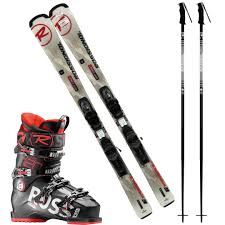
In some ski resorts a helmet is compulsory, especially for children. Wearing a helmet has in the past been thought of something you only need if you are a beginner, however nowadays, probably 90% of people wear a helmet whilst on the slopes. Remember you can be the best skier in the world but it's always the other person you need to think of. So basically - wear a helmet.
With ski helmets it's best to avoid the cheaper ones. You get what you pay for is the best motto for buying a helmet. You can rent helmets in the ski hire shop at the same time as you collect your ski & boots. Remember to order them from us in advance. Children who book certain ski packages will have free helmets.
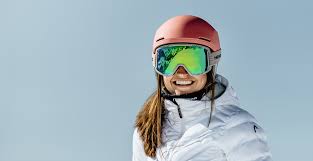
A good ski jacket is an essential item on your holiday but you don't need to break the bank for the first time on the slopes. There are hundreds of jackets to choose from and just double check the level of waterproofing and breathability. Here is some information from "Trespass" who specialize in the UK & Ireland in ski clothing and at affordable prices - There are cheaper and just as suitable jackets available than below but this gives you an idea of what to look into.
The DLX range of ski jackets offers the maximum waterproof protection of 20000mm and have an increased breathability rating of 10000mvp for those who want to commit to the cause and make a real investment. DLX products offer performance-enhancing technicalities that are designed for life in extremes.
Base layers are what you wear under your jacket and ski pants and are often are just as important, especially in colder climates. When applying your base layers avoid cotton products, as they are neither waterproof nor breathable. Synthetic material or wool works best.
If it is very cold, then adding a mid layer over the base is a good idea. A fleece, sweater, and other similar clothing will keep you warm on the mountain.
Insulated gloves or mittens are also very important ski items. Since your hands will be in contact with the snow throughout the day, Waterproof gloves or mittens are essential. They should also offer enough dexterity so you can easily hold on to the ski poles. Having warm hands is very important whilst skiing so make sure at the end of the day you dry your gloves. You can also buy handwarmers to put inside your gloves if needed. If there are children with you it's always a good idea to have a couple of pairs of gloves as it's highly likely a glove will be lost or they will get wet during the day (normally from when they are making snowballs or creating snow angels).
Keeping your feet dry is also essential to enjoying your day on the slopes. You should bring a minimum of two pairs of ski socks, as you never know if you will need the second pair. Your socks also should be made out of wool or synthetic materials in order to keep your feet dry. Always wear just one pair of good ski socks whilst skiing (not 2 or 3 pairs as doing so can cause blisters which means you will find it difficult to ski)
Goggles help increase your vision while battling glare and any snow fall. If you are renting a helmet at the resort, it may also help to rent your goggles as well. Goggles can also help if it's windy as they offer more protection to stop your eyes from watering.
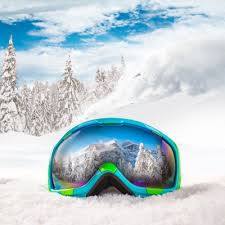
To ensure you are prepared for anything, bringing a small backpack filled with essential items is wise. For example, you can pack sunscreen, lip protection, scarves, hats and maybe even a sandwich. Depending on the slopes where you are going to be skiing you may be able to get away without a backpack and fit items such as lipbalm and suncream in your pockets.
There are many hats that you can get and these are handy to wear whilst walking around the resort, especially on the evenings. You can lose about 40% of your body heat through your head.
Lips can become dry and chapped very quickly at altitude so a good lip balm is essential. Get one with a high SPF so this will protect your lips against the sun as well.
Wearing sunglasses with UV protection will not only protect your eyes, but help you see the slopes. When the sun is shining, it reflects off the snow and can make it very difficult to see. It is recommended to have plastic lenses in case you break them. If it's snowing at the time, you will find your goggles are more suitable than sunglasses.
These are great to have as not only will they keep your neck warm, but can also pull up over your face for those times when the wind chill is a bit much.
Always make sure you drink plenty of water to avoid becoming dehydrated. A small plastic bottle of water in your pocket or backpack is a good idea (or you can also buy a hydration backpack if you prefer)
We hope you have found our "what to wear on the slopes" guide helpful but if you have any questions feel free to contact us.
Our UK call centre number is:
0808 238 7542
Or email us at:
info@skiandorraholidays.com
Send us a message
Click here to send us a message